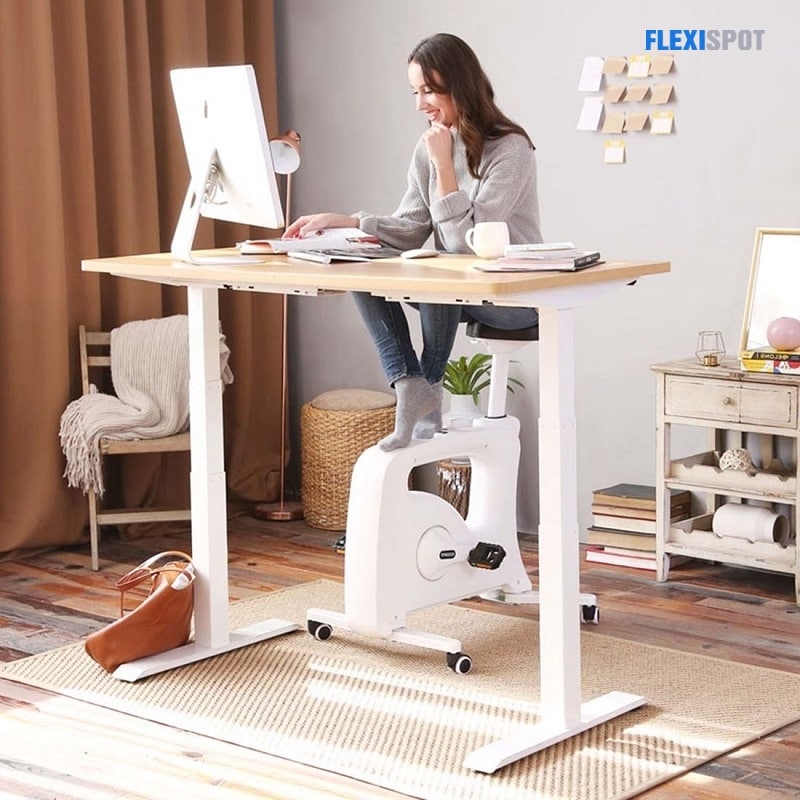Standing desks, like any other commodity, can be reused or resold. Consumers must focus on the desks' quality attributes to make sure the product is in good shape. Discover more about height-adjustable standing desks and how they function; this information will help you find the best-used sit-stand desks for your home office or company. Vendors can make up any story about their desks to demonstrate their superior quality. However, your knowledge enables you to distinguish between good and bad attributes.
Aside from the quality inspection choices, purchasing a used height-adjustable desk has particular challenges. The primary difficulty is shipment because any mistakes in moving your desk will result in functional harm. So, if you want to escape all of these inconveniences, you can always go for the latest sit-stand workstations. However, if you find an excellent used desk within your price range, you should not pass it up.
Transport and Assembly
When it comes to purchasing a second-hand desk, moving it appears to be the most challenging problem. A local transaction can be beneficial to you. If the seller's area is close to yours, you should have no trouble obtaining your items. Lower the desk elevation to the lowest possible setting and transport your standing desk to your place in a spacious vehicle. To prevent your desk from harm, wrap it in blankets or cardboard. If your standing desk has a hand controller, you must remove it since the hand control system of the desk is more likely to break.
Ninety-nine per cent of standing desks are not intended to be disassembled, so you will have to tackle the obstacle of finding out how to deconstruct the standing desk by following assembly instructions backwards. Ideally, the original packing has been preserved; else, plan to over-box the heck out of it because the frame pieces and tabletop are weighty and easily damaged in delivery. You must reassemble the desk using the exact instructions once it has been transported; however, you may need to drill new holes into the tabletop if it is of normal MDF-core or plywood-core structure, as these have the potential to decay.
The desk may also be shipped by cargo, fastened down to an adequately sized pallet. Most consumers do not have a cargo business account or access to the proper pallet or pallet strapping gear; therefore, this is a challenging course to take. It's better to hire a "blanket wrap" carrier (sometimes known as a "moving service") who will give you a decent cost for sending a single item. But, these transporters have a lousy track record of breaking standing desks in their overcrowded vehicles, so make sure to get full value insurance.
Once you've got your desk, you'll need to put it together. For this, follow the manufacturer's instructions that are usually in the manual. Again, choosing a carrier service would be the most beneficial option for you. We recommend purchasing a used desk from your local area since the damage is inevitable when your standing desk moves a great distance.
Considerations
After you've sorted the transportation issue, here are some things to think about if you're considering buying, or even selling, a second-hand sit-stand desk:
WARRANTY
Warranties on large-ticket products like this are often not legally transferrable to a new owner, so keep in mind to make sure that the desk is in excellent shape and will survive long enough to justify the expense. Out-of-warranty parts, like most items, might cost more than a new standing desk—and don't anticipate free delivery. However, if you need replacement parts in the future, having the original receipt on hand will be helpful because they often do not contain serial numbers. The maker's quickest way to identify which version of the product you own is to look it up in their ordering system.
ESSENTIAL PARTS
The weight of the legs and the sturdiness of the crossbars all play a role in the stability formula of a standing desk. Before heading out to examine a pre-owned desk, it's a worthwhile read to know about standing desk stability so you're acquainted with all the components that should be inspected.
The weight capacity of the desk is essential for your work. Although standard desks can support the maximum weight, this factor must not be overlooked. If your job is distinctive, you must learn about standing desks.
HEIGHT RANGE
When examining a new sit-stand desk in a showroom, the first thing anyone does is elevate it to maximum height and push it around a little to assess its steadiness. It's best to do it at your maximum standing height to evaluate how steady the desk will be for you. If you notice a lot of wobbling in the desk at your standing position, you can move on; the unsteady monitor feel isn't worth it at any price.
LEVELING
To ensure that everything is as secure as possible, turn the desk over and fasten all nuts and screws. When flipping the desk back around, make sure that both feet are equal front to back and level with one another (use the level on the desktop for the second portion) and that the leveller pads on each corner are in place. If there is any tension in the frame, it will likely show as a noisy transition from sitting to standing.
TABLETOP
Some wear and tear are to be considered, and desktops can be simply replaced—the base is typically the more expensive component you should spend your attention on. However, if there is any uncovered MDF, such as within the grommet holes (if any), make sure there hasn't been any spillage soaked into the wood fibre. Essentially, you want to ensure that the tabletop is flat, not deformed. There must be no visible crevices where glue may have dried out, leaving the tabletop vulnerable to moisture, liquid cleansers, or dirt and bacterial build-up.
LUBRICATION AND GREASE STREAKS
Lifting columns glide into one another to alter the elevation of the desk. The proper lubricant allows you to attain the ideal height for your task without any obstacles.
Some foundations are well-known for having extensive streaks running the length of the inner tubes. These can accumulate dirt and clog up the slides over time, so ensure the frames have been cleaned and re-lubricated regularly and haven't been dwelling in a particularly dusty environment. Every base maker should have a suggested lubricating solution. If you can't find it in the manual, call customer service to determine what type of oil they recommend.
TESTING
The best strategy to test a desk's quality is to use your own items on it. Before you take this desk home and discover that once fully loaded with all your stuff, it doesn't perform quite as smoothly as when the surface was cleansed of all things, it's necessary to replicate the lifting legs that you'll be activating on it.
When purchasing used items, you must inspect the performance as much as possible, though it's not always likely. After several days, your new standing workstation may stop operating. Opt for a new sit-stand desk with a warranty on its equipment, just like FlexiSpot. It can help you save money on unnecessary expenses.

